It seems we can’t find what you’re looking for. Perhaps searching can help.
Sign Up for newsletter!
Subscribe to get the latest eBook!
Hotline






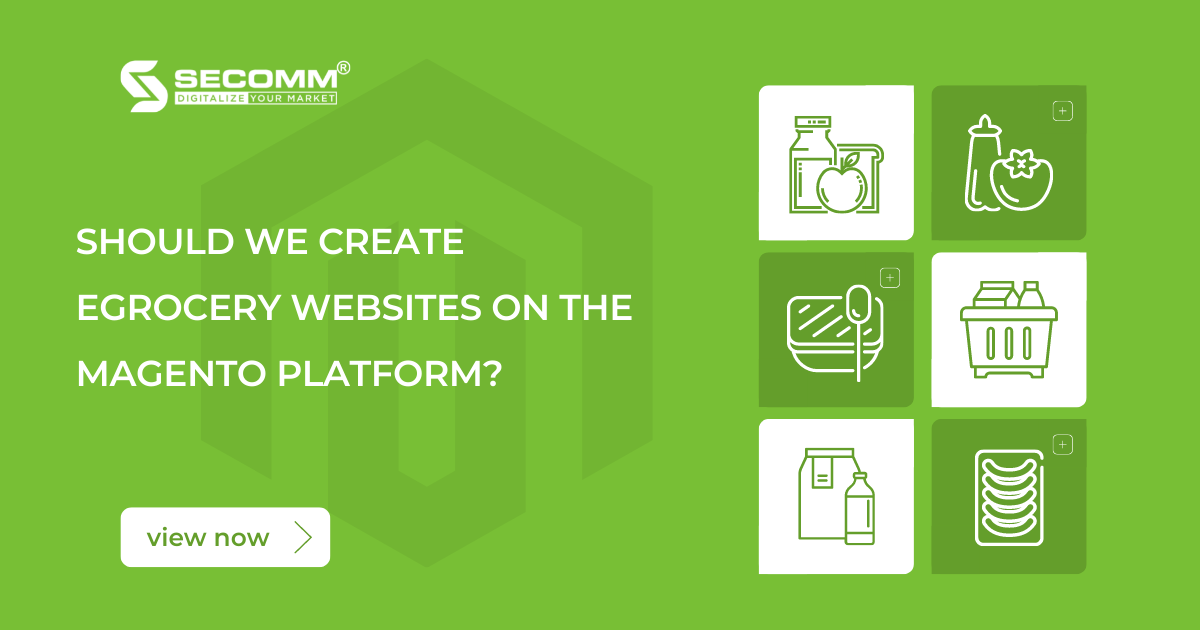
The growth of the grocery eCommerce industry in the Vietnamese market in 2021 is undeniable. According to the Google report, online grocery-related searches will increase by 223% in 2021, 3.6 times in June, and 11 times in July during Vietnam’s lockdown due to Covid-19 in several provinces.
Recognizing the market’s enormous potential, the need for a professional eCommerce website for online grocery businesses has grown significantly to expand the business system, supporting digital transformation and long-term revenue growth. Some of Vietnam’s largest grocery businesses, including Annam Gourmet Market, Bach Hoa Xanh, Organica, Farmer’s Market, and WinMart, have led the way in developing an eCommerce website system and have seen great success.
Choosing the right platform to build an eCommerce website makes the above brands successful. Platforms play a significant role in developing and operating an effective online grocery website. Along with well-known names such as Shopify, BigCommerce, and WooCommerce, Magento is considered the best online grocery support platform.
Businesses have many options when designing the eGrocery website interface on the Magento platform, including using available themes, customizing themes, and creating their own.
Businesses can find Magento-specific themes in the grocery field, developer community, or partner using available themes. It helps businesses reduce the cost of interface design, but it limits businesses’ brand positioning because the interface is easy to duplicate with other websites.
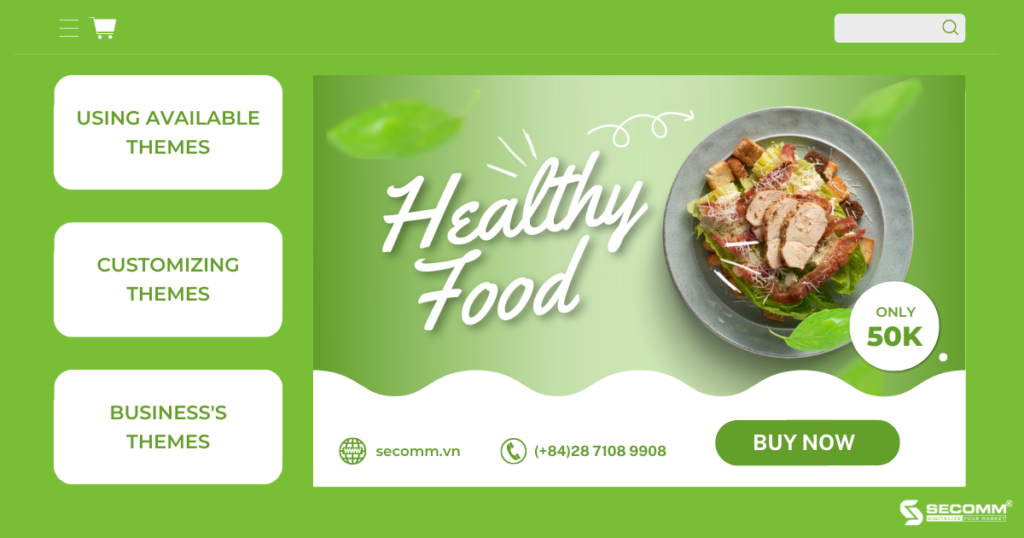
Businesses can save money and add brand identity elements such as colors, fonts, layout, and so on by customizing their themes. However, businesses need a team with extensive Magento expertise and experience to set up and customize the interface efficiently.
Businesses will have a one-of-a-kind website for their brand if they design their interface. However, it will require an enormous investment in development costs and a professional team.
When choosing Magento to develop an eCommerce website, most grocery stores often customize or use their themes to support an in-depth eCommerce business.
The Magento platform provides a comprehensive set of features, ranging from basic to advanced, for the development of professional eCommerce websites. Additionally, Magento allows you to create custom functions to solve specialized grocery industry problems.
Basic functions to assist businesses in running an efficient and smooth website system, such as
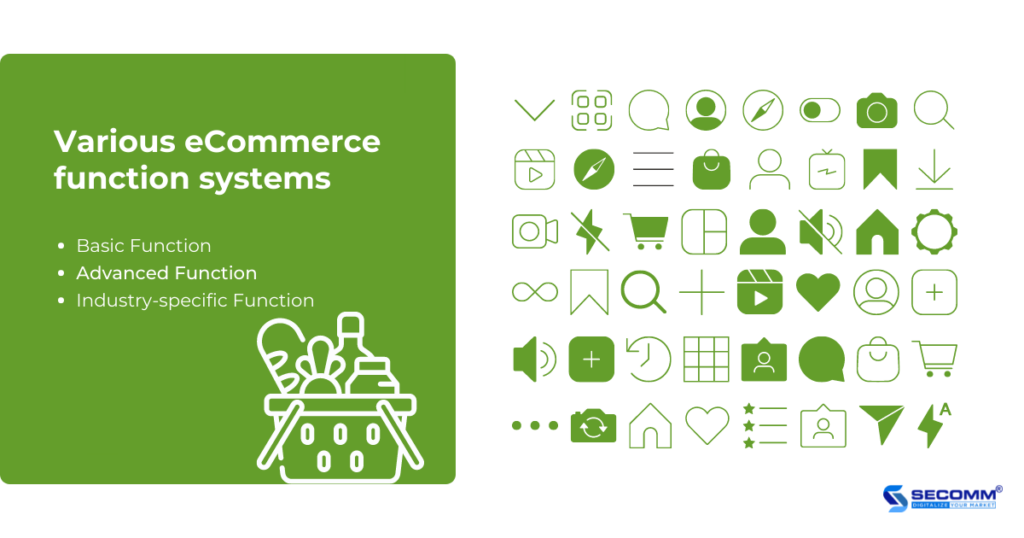
Advanced functions that improve consumers’ online shopping experiences, such as advanced search (Elasticsearch, live-search), MSI (Multi-Source Inventory), abandoned cart, similar product recommendations, PWA (Progressive Web Apps), multi-layered product catalog, and so on.
In addition, industry-specific functions assist businesses in dealing with their problems and reducing mistakes in the online grocery industry, such as order tracking, fast delivery, delivery time and location options, etc.
The high flexibility of Magento open source is an outstanding advantage that helps the system not only operate effectively at present but also expand the system to accompany businesses in the future.
Grocery businesses can fully integrate 3rd party services with Magento, making eCommerce operations efficient and smooth:
Marketing: Integrating with marketing software from Email Marketing (Mailchimp, Getresponse) to advertisement (Facebook, Google, Zalo, Tik Tok) to optimize eCommerce business
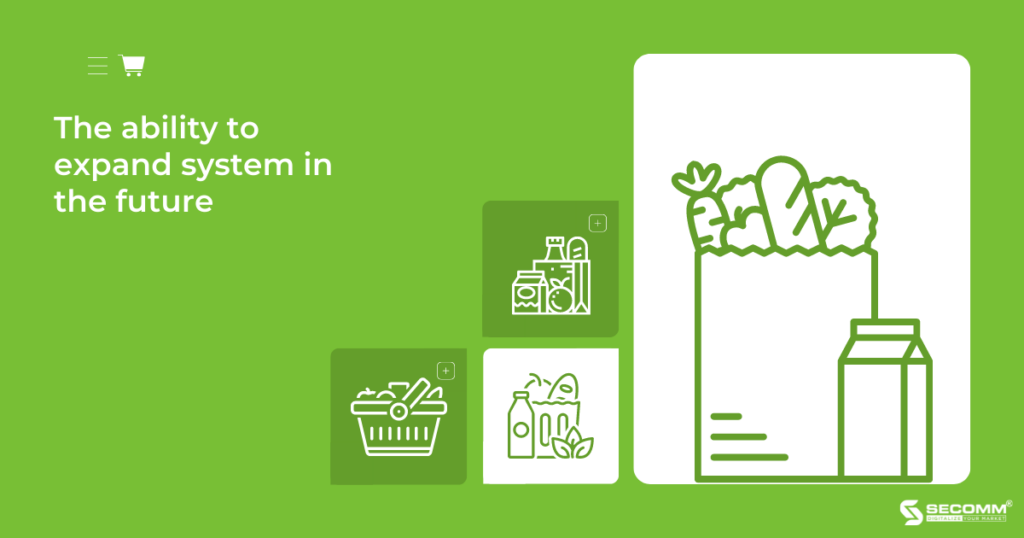
Besides that, Magento also allows businesses to expand from one website, and one store to many websites, and stores, and convert multi-language, and multi-currency flexibly while still being able to manage all data at the same time.
As a result, Magento is a suitable platform for a wide range of business models, including B2C, B2B, B2B2C, and O2O, as well as a wide range of business sizes, including new businesses entering the eCommerce market, startups, SMEs (small and medium enterprises), and large corporations.
In the path to building a website, security is another significant benefit that makes the Magento platform the preferred platform for online grocery stores.
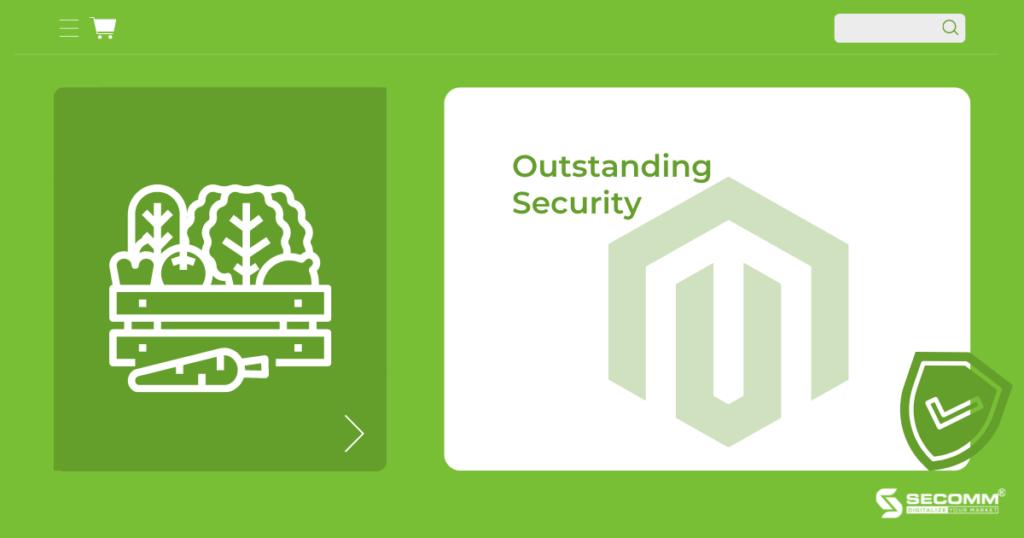
Magento includes a security scan tool that helps identify problems and propose security solutions to handle arising errors, effectively optimizing the security of grocery eCommerce websites. Moreover, to improve admin account security, Magento requires admins to use advanced passwords with at least 7 characters, including letters, numbers, and special symbols. Simultaneously, password complexity can be added to lowercase and uppercase passwords or re-login after a certain amount of login session time. Furthermore, Magento supports two-factor authentication, such as OTP or CAPTCHA code, to strengthen the security of the grocery eCommerce website system.
The Magento platform has a worldwide developer community that includes many experienced and professional Magento developers.
Magento is also part of the Adobe ecosystem, helping businesses easily access new technology trends and use Adobe’s available application store.
With such a strong development community, online grocery store businesses will receive the most assistance in resolving technical issues and consulting on building eCommerce solutions that are appropriate for their business model.
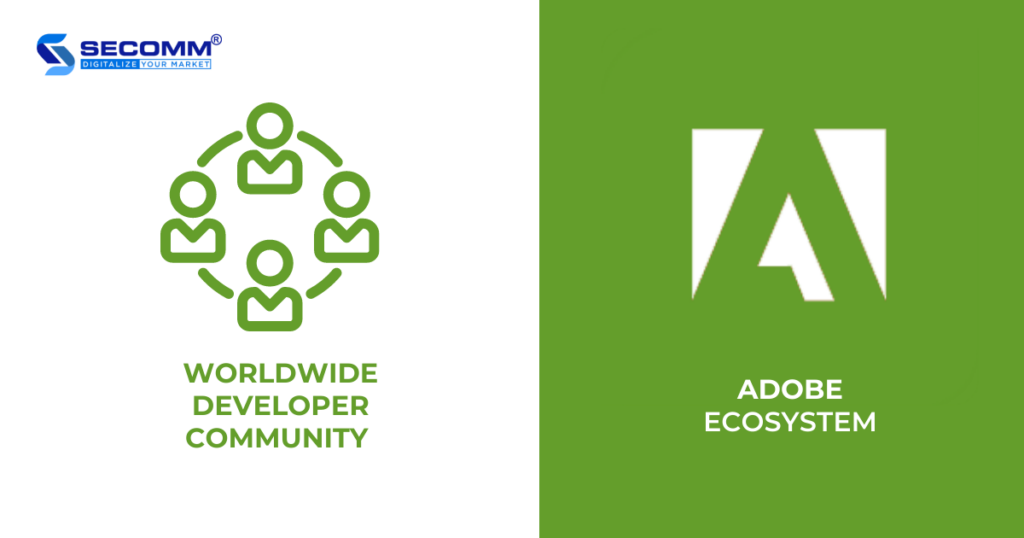
Although Magento is highly appreciated for its features and performance, the cost issue is still a significant obstacle that makes many eGrocery businesses hesitate to choose Magento.
Implementing a complete eCommerce website system built on Magento costs between $10,000 and $250,000.
| Cost | Magento Open Source | Magento Commerce | Magento Commerce Cloud |
| User licenses | Free | $22.000 -$125.000/yr | $40.000-$190.000/yr |
| Hosting | $100-$500/yr | $500-$6.500/yr | Free |
| Domain | $10-$400/yr | $10-$400/yr | $10-$400/yr |
| SSL Certificate | $50-$300/yr | $50-$300/yr | $50-$300/yr |
| Creating website | $5.000+ | $5.000+ | $5.000+ |
| Developing website | $1.800-$10.000/yr | $10.000+ | $10.000+ |
| Extensions | $60-$600/ea | 60-$600/ea | 60-$600/ea |
| Total | $10.000-$17.000 | $33.000-$149.000 | $50.000-$207.000 |
The table comparing Magento construction costs
A complete Magento project typically requires 3 to 6 months, with some projects requiring up to a year. As a result, businesses frequently waste time because of the complex functional system and the scarcity of Magento experts.
Businesses require a professional team with a deep understanding of Magento as well as practical experience on highly complex systems to implement an effective eGrocery website using Magento.
Although Annam Gourmet has previously owned a website, it is primarily used for brand development, and the effectiveness of eCommerce activities has not been prioritized. As a result, this website system is not comprehensive and is limited to crucial eCommerce functions. Furthermore, to transition into the “new normal”, Annam Gourmet must expand its online sales channel more intensively and effectively.
In order to meet the needs mentioned earlier, as well as to support the company’s long-term development goals in the Vietnamese market, Secomm and Synova successfully built a complete eCommerce website system on the Magento 2 platform.
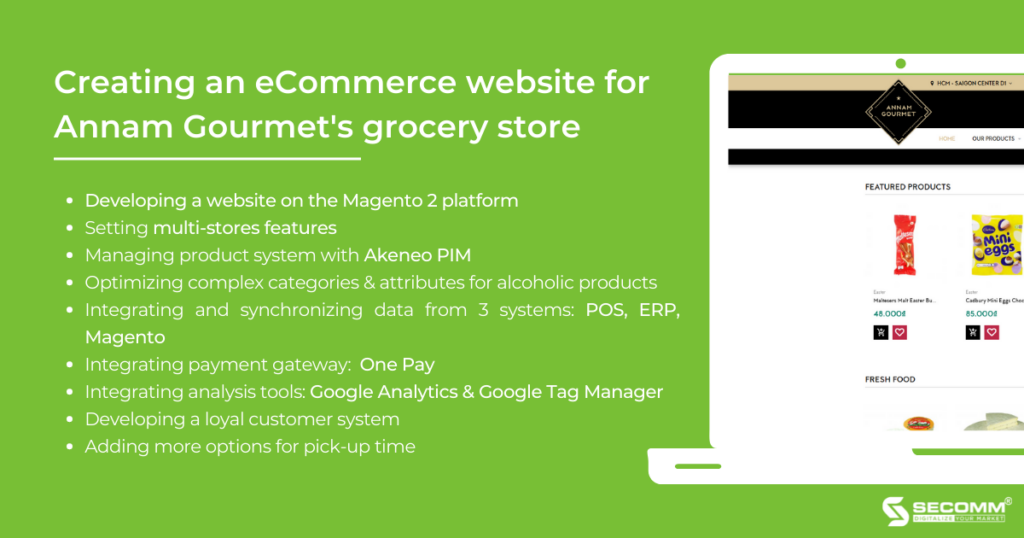
The Magento 2 website system is operationally stable and effective with other components in Annam Gourmet’s operating system. As a result, Annam Gourmet’s eCommerce website, with typical grocery industry elements, is capable of meeting all business needs, such as operating effectively in a highly complex system, quickly processing huge amounts of data about products, customers, and orders, and seamlessly syncing with ERP, CRM, POS, and so on.
In general, when building a grocery eCommerce website with Magento, businesses can master everything from interface design to feature system, leveraging a diverse ecosystem, a system capable of flexible customization, and superior security. On the other hand, businesses must prepare and invest in a budget, time, and team to successfully and effectively implement it.
Our company – SECOMM, has been partnering with many big enterprises such as An Nam Group (Vietnam), Jasnor (Australia), and Changi Airport Group (Singapore). As a result, we are aware of the challenges and worries firms face while developing an eCommerce website system.
Get in touch with us now for FREE eCommerce consultancy and solutions in eGrocery businesses.
 2
2
 4,481
4,481
 0
0
 1
1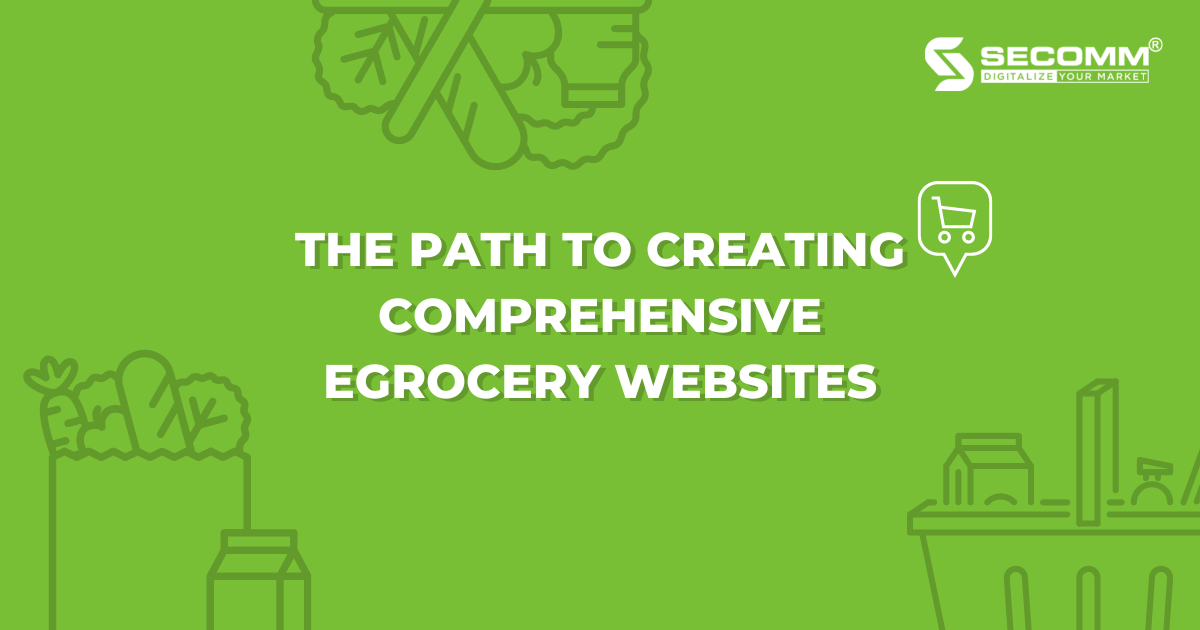
According to Statista, the size of the Vietnamese ecommerce market in 2021 was $13 billion and is expected to reach $39 billion in 2025, ranking second in Southeast Asia behind only Indonesia. The spectacular breakthrough of the grocery eCommerce industry has coincided with the explosion of the eCommerce market. As a result, online grocery shopping has become a part of 53 percent of consumers’ habits.
Grocery companies should create their eCommerce website as soon as possible to jump into the bigger game and develop online grocery business activities to capitalize on the enormous potential of the eGrocery market and gradually transition to digital transformation.
SECOMM has outlined the journey to create a comprehensive eGrocery website for the Vietnamese market with over 7 years of experience in eCommerce.
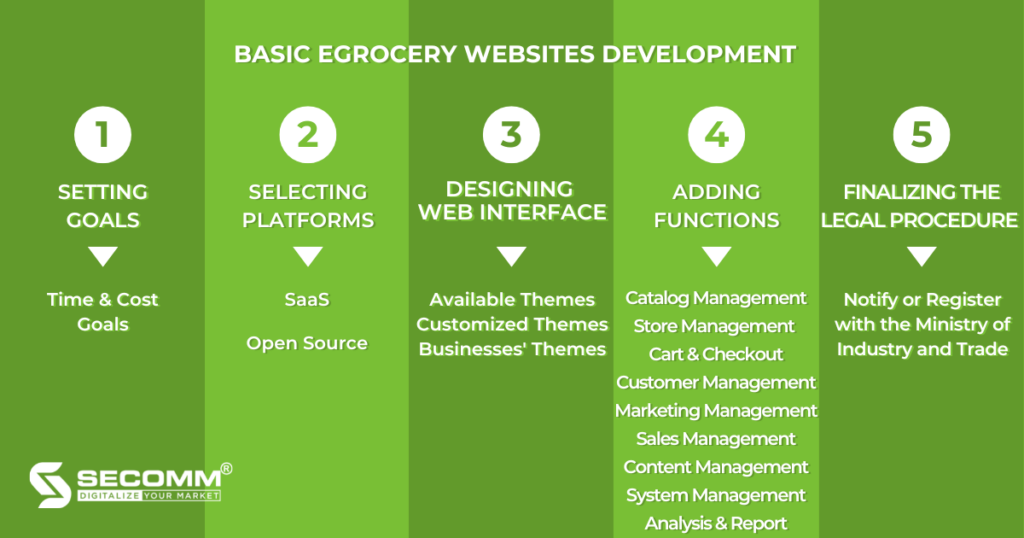
The first step for grocery businesses is to set goals and prioritize those goals to plan the result of an appropriate eCommerce website for each stage.
Businesses can consider long-term goals such as brand positioning, exploitation of potential customers, and product online business capability.
Short-term goal activities such as revenue growth, customer monitoring and analysis, campaign effectiveness evaluation, and so on should prioritize by businesses.
Furthermore, the user experience factor, which includes services such as payment, logistics, online customer care, and so on, is critical to increasing interaction, support, customer consultation, and problem resolution as quickly as possible.
In terms of duration, businesses can choose to deploy quickly to penetrate the eGrocery market or gradually adapt to the market at this stage. When deploying a grocery ecommerce website, the budget will be determined by each business’s strategy and financial potential.
Two popular platforms assist businesses in developing eCommerce websites: SaaS (Software as a service) and Open Source. Here are some of the best Saas eCommerce platforms: Haravan, Shopify, and BigCommerce.
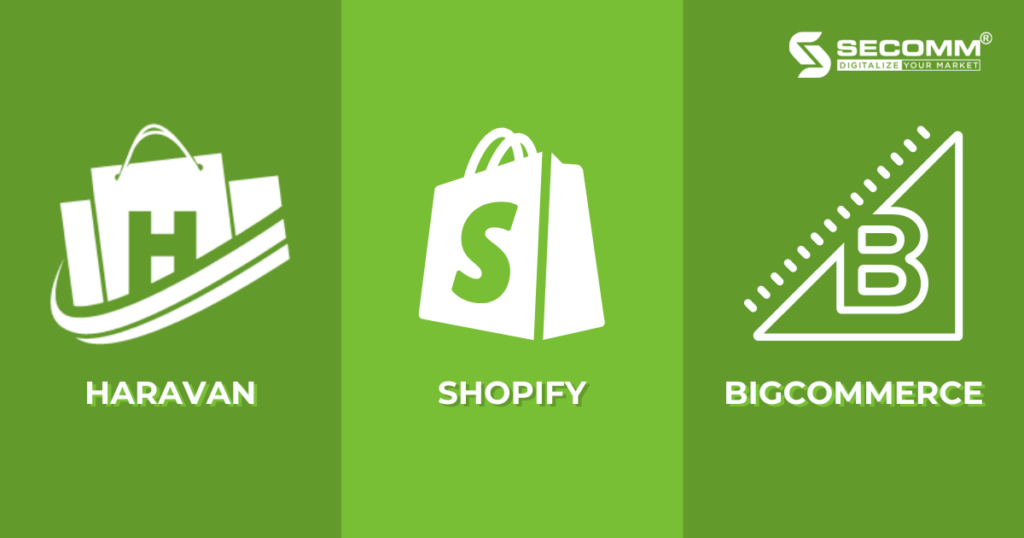
Open Source eCommerce Platforms widely used in the Vietnamese market include WooCommerce, OpenCart, and Magento.
Due to the significant differences between SaaS Platforms and Open Source Platforms, stage businesses prefer to use SaaS Platforms in the initial stages of basic eGrocery
Businesses have to meet the following criteria when designing the website interface: UI/UX standardization, displaying the brand’s and the eGrocery industry’s characteristics, and product presentation synchronization to provide the best experience to customers.
There are three approaches to designing the interface: using available themes, customizing themes, or creating their own. Businesses frequently use the available themes in this stage to save the most money. Still, some companies with financial potential will choose the other two options for better branding.
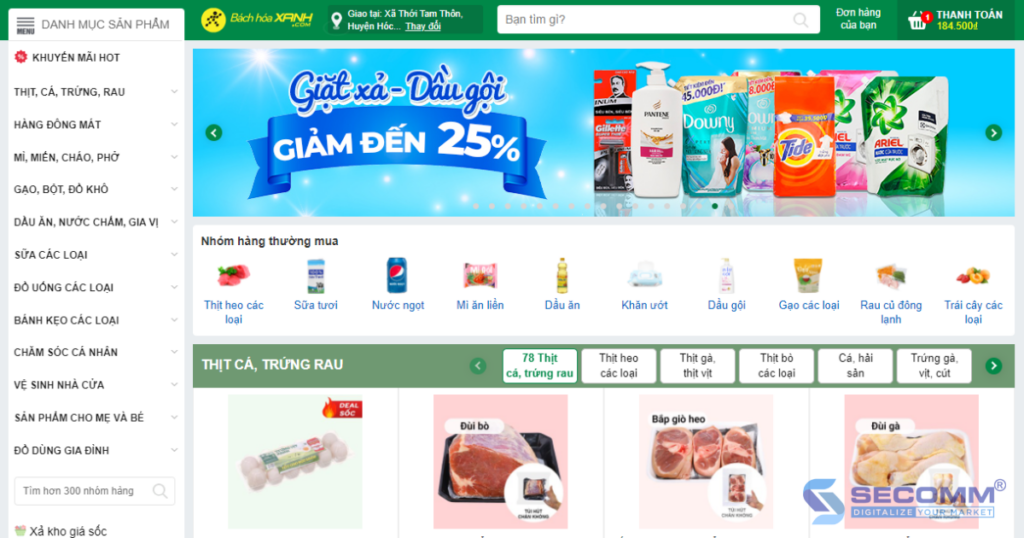
When operating a grocery eCommerce system, businesses can prioritize the development of basic functions to meet the essential needs during this time.
Some basic functions required in eGrocery websites, such as:
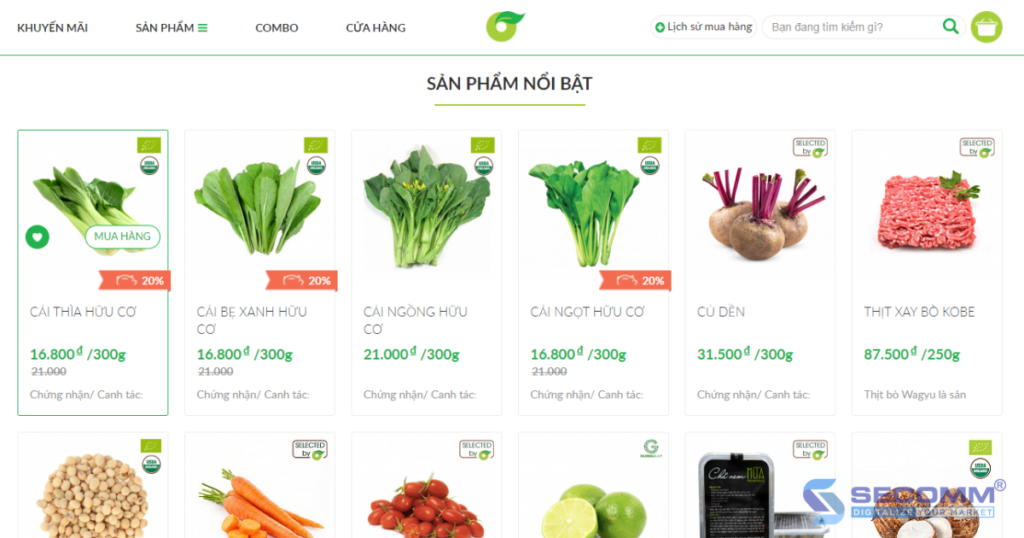
According to Decree 52/2013/ND-CP of the Government, every individual or organization that owns a sales eCommerce website must notify or register with the Ministry of Industry and Trade on the eCommerce Operation Management Portal.
Websites that exceed the time limit or fail to register/notify the competent management agency within the time frame specified will be administratively sanctioned by regulations.
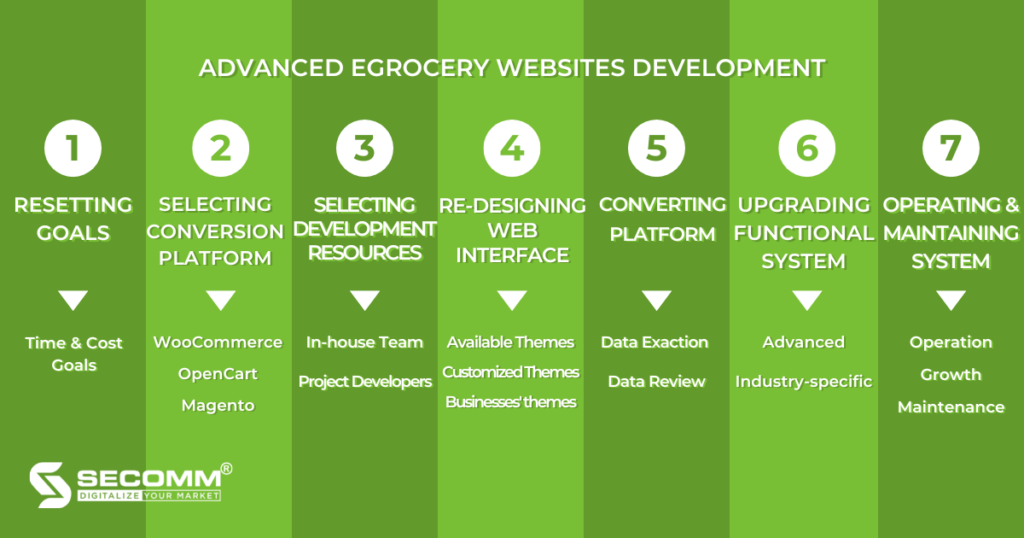
As the company grows and the market changes, the goals must be adjusted accordingly. This is also the time for leaders to rethink the business strategy’s target and money to invest in the grocery eCommerce website system. During this time, businesses frequently focus on the short and long-term goals of expanding the online grocery store system.
Long-term business goals can include expanding market segments, developing loyalty programs, forming consumer online shopping habits, etc.
Short-term goals for businesses can include capturing more new potential customers, increasing revenue, and supporting Ecommerce Marketing strategy.
When SaaS platforms are no longer effective enough to help businesses expand their online grocery store website systems, they have to turn to Open Source platforms like Magento, WooCommerce, and OpenCart to build advanced eGrocery websites.
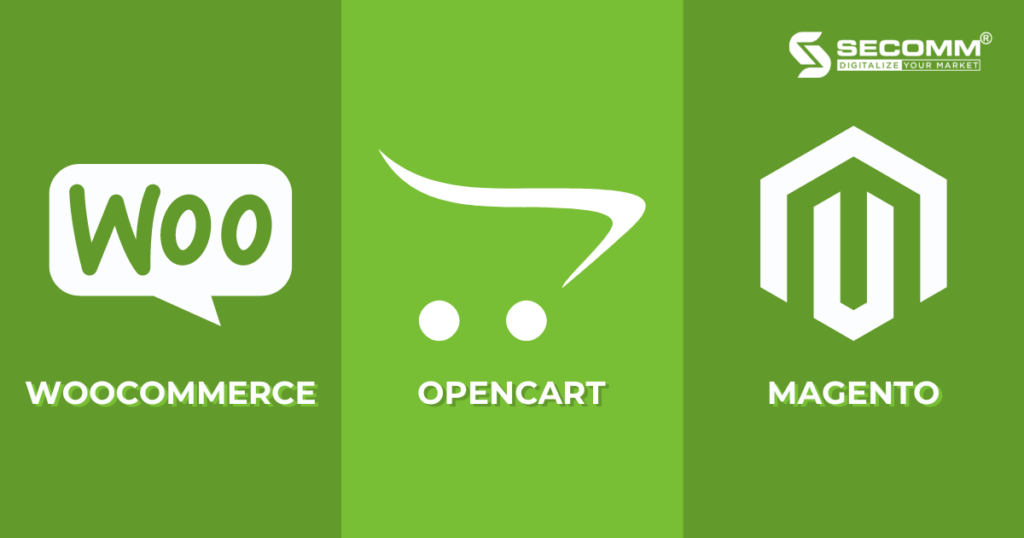
In this stage, platform selection criteria include:
Absolutely, businesses will face more challenges when switching platforms from SaaS to Open Source, such as changing costs, time to train personnel on open platforms, and data loss or errors during the conversion.
Businesses must choose the right resources to develop their website to build eCommerce website on an open source platform. Typically, companies can create an in-house team or find a project developer. Regardless of the resource, professional knowledge and practical experience about the chosen platform are required.
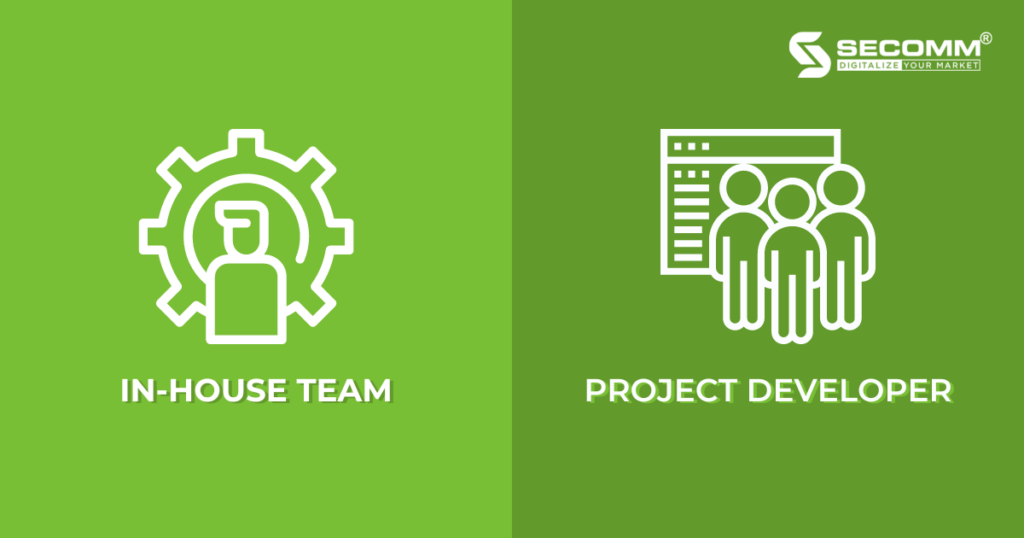
Businesses should recruit and train IT and eCommerce personnel with expertise and experience in the chosen platform. Building the right team will take a lot of time and money. Still, it will help businesses manage resources better and actively edit or develop the website system according to the requirements.
Businesses should look for project developers based on the following criteria to collaborate with them:
This will help businesses learn expertise, gain experience, and develop a website in all aspects of the eGrocery industry. Still, companies and their partners must collaborate effectively to achieve a better result.
Businesses can keep things the same while switching platforms. There is no need to change the current website interface. Many companies, however, will rebuild the website interface to match the new strategy and platform.
Similar to the previous stage, businesses have several options when designing the interface of a grocery eCommerce website: using available themes, customizing the themes, or creating their own. At this stage, however, businesses frequently choose to customize or design their own theme to reflect the characteristics of the eGrocery brand and industry.
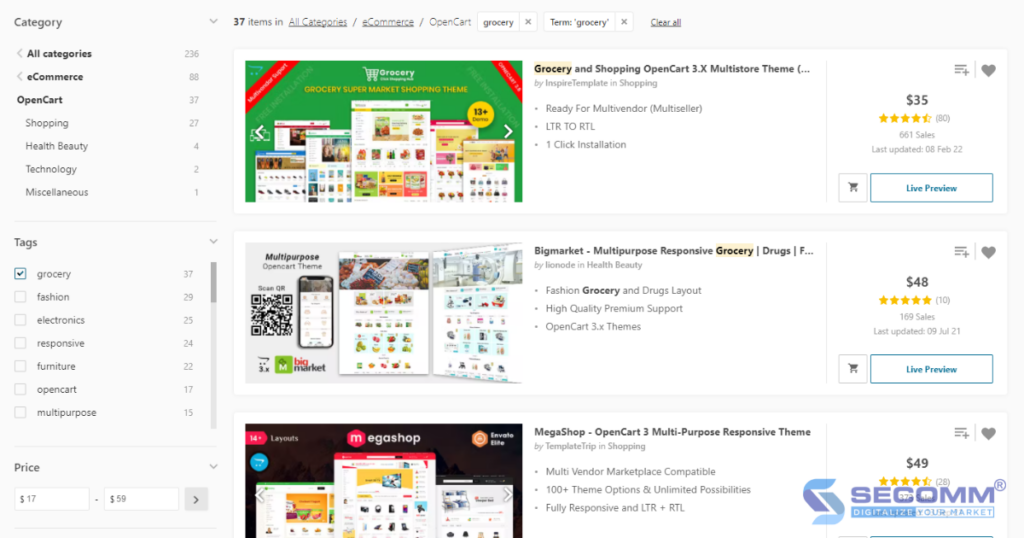
After selecting the appropriate conversion platform, the conversion should be carried out carefully to limit the risk of data loss or enterprise error. To avoid errors, the conversion is usually done as automatically as possible.
The platform conversion process includes steps to extract data from the old system and record it into the new system. After converting the platform, businesses need to double-check to ensure that the converted data is fully and correctly according to the plan.
In addition to the basic functions, businesses should focus on developing a more complex system of functions, including advanced and industry-specific functions for the eGrocery industry.
Advanced functions include order tracking, abandoned cart, similar product recommendations, advanced product search, multilayer product catalog, and others that improve the consumer experience and speed up the shopping process.
Industry-specific functions aid in thoroughly resolving the challenges of implementing intensive departmental eCommerce, meeting the needs of customer segments and businesses such as fast delivery, delivery time selection, and so on.
Furthermore, businesses must constantly update and develop user-friendly functions to stay competitive in the market.
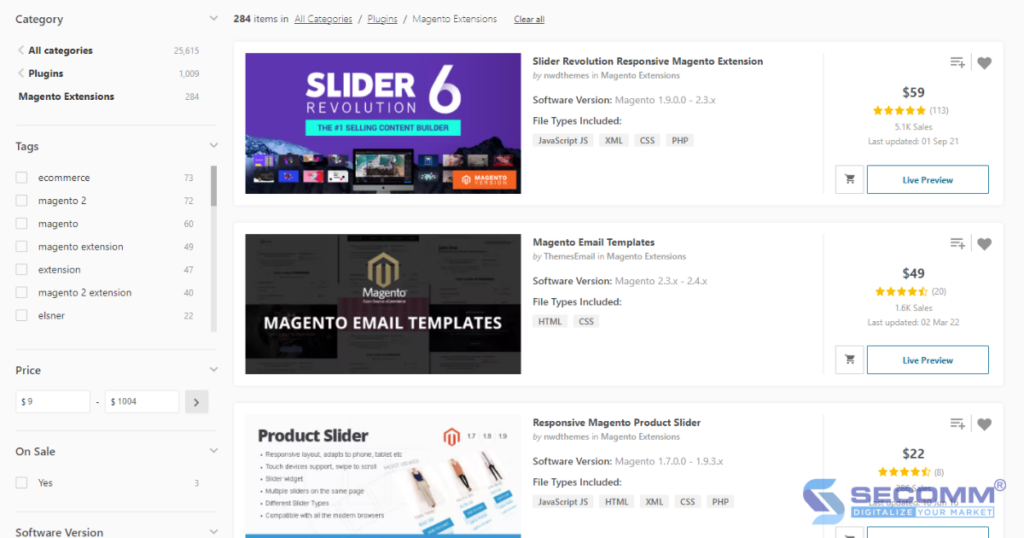
When putting the grocery eCommerce website system through testing, businesses must review and test the entire website and functionality in a specific time frame to ensure order processing speed, website stability, and so on. In addition, businesses must immediately contact the in-house team or the developer if issues arise to adjust and improve the website before going live.
After the grocery eCommerce website system has stabilized, businesses should focus on Ecommerce Marketing strategies (SEO, SEM, Email Marketing, Content Marketing, Social Marketing, and so on) or implement Omni-channel to grow their online eGrocery business.
For long-term sales growth, businesses should maintain, update, and upgrade their website system regularly, quickly adapting to changes in the eCommerce market in general and the grocery market in particular.
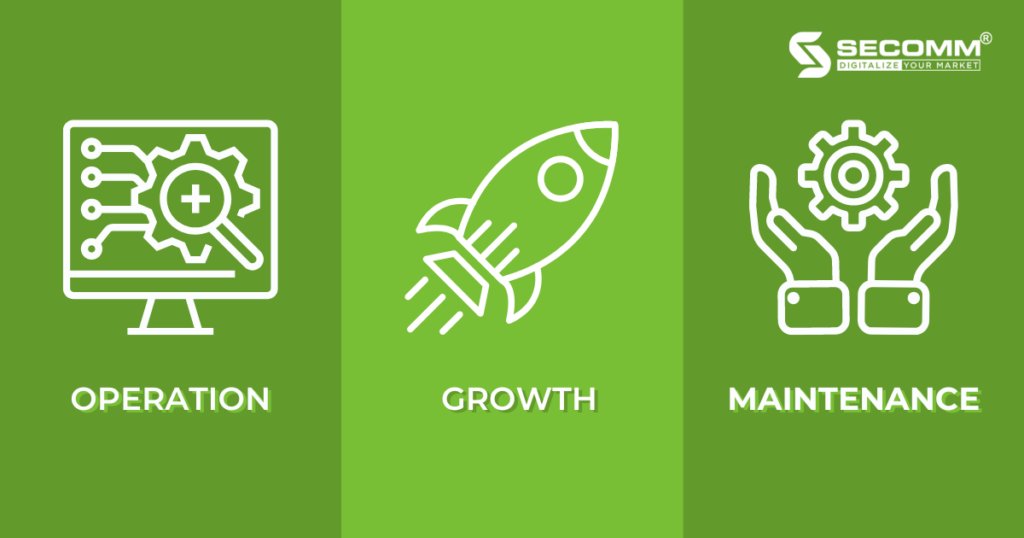
In general, developing comprehensive eGrocery websites for the Vietnamese market is complex. It requires businesses to invest significant time and money in researching the best eCommerce strategy for each stage of business development.
Our company – SECOMM, has been partnering with many big enterprises such as An Nam Group (Vietnam), Jasnor (Australia), and Changi Airport Group (Singapore). As a result, we are aware of the challenges and worries firms face while developing an eCommerce website system.
Get in touch with us now for FREE eCommerce consultancy and solutions in eGrocery businesses.
 2
2
 4,157
4,157
 1
1
 1
1
Grocery eCommerce is a trend in eCommerce that allows customers to buy goods online. This is regarded as the leading industry in the eCommerce market, particularly in Vietnam. According to an iPrice report, when people began staying at home to avoid the Covid-19 epidemic, traffic to websites specializing in the grocery business increased 45% faster than before. This trend remained stable after the social distancing was reduced, increasing by 10% at the end of the year. Online grocery is the only category that has seen consistent growth throughout the pandemic, with search demand continuing to rise.
There are some popular grocery eCommerce websites in Vietnam can be mentioned as:
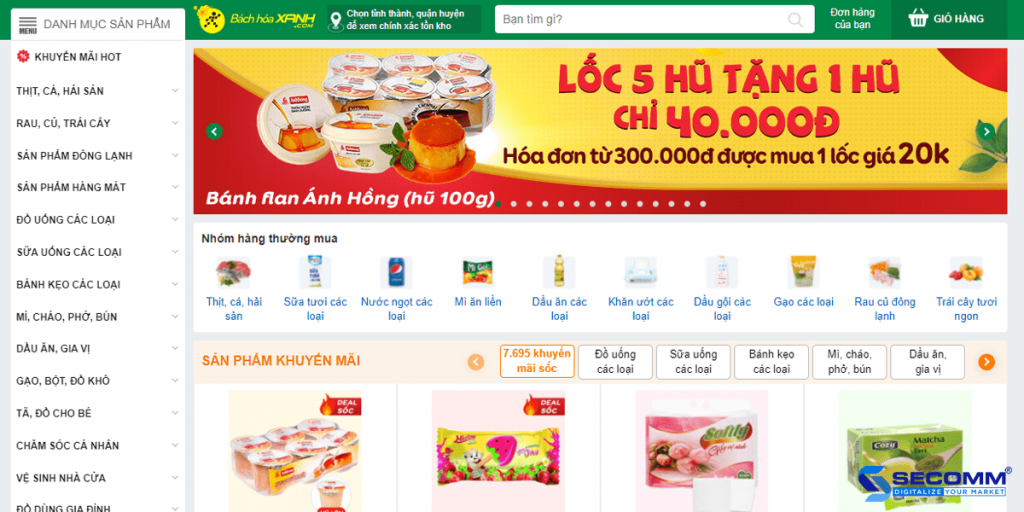
Bach Hoa Xanh is one of the most popular grocery store chain owned by Mobile World Joint Stock Company that specializes in selling fresh food and necessities. Bach Hoa Xanh currently operates nearly 2,000 stores in the South, East, and South Central provinces. This is the most visited website in the top five most visited websites in the Vietnam market, behind only the top four eCommerce platforms today, namely Shopee, Lazada, Tiki, and Sendo (According to iPrice).
– Website: https://www.bachhoaxanh.com/
– Traffic: 1.1M/month
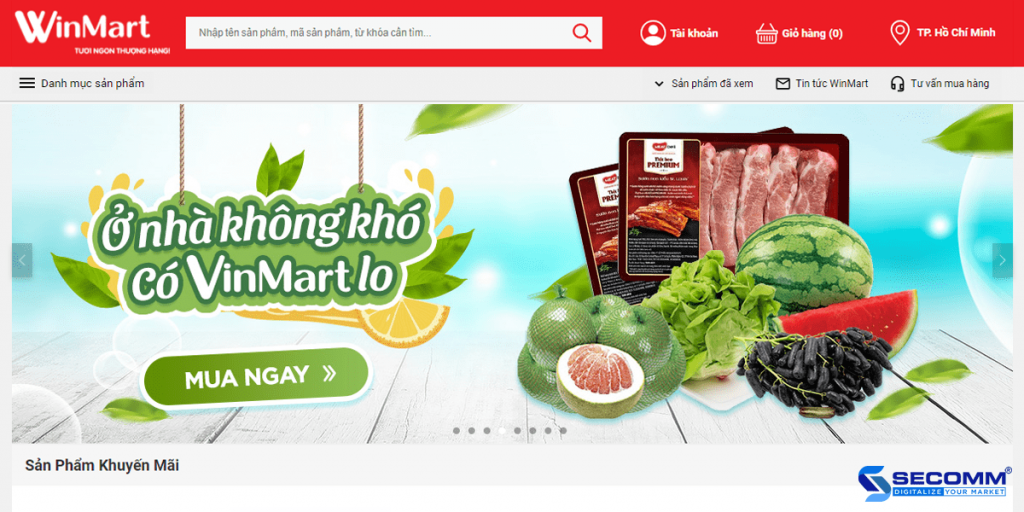
WinMart is a supermarket system and grocery store chain purchased by Masan Group from Vingroup. This brand was more commonly known as Vinmart at that time.
– Website: https://winmart.vn/
-Traffic: 209.5K/month
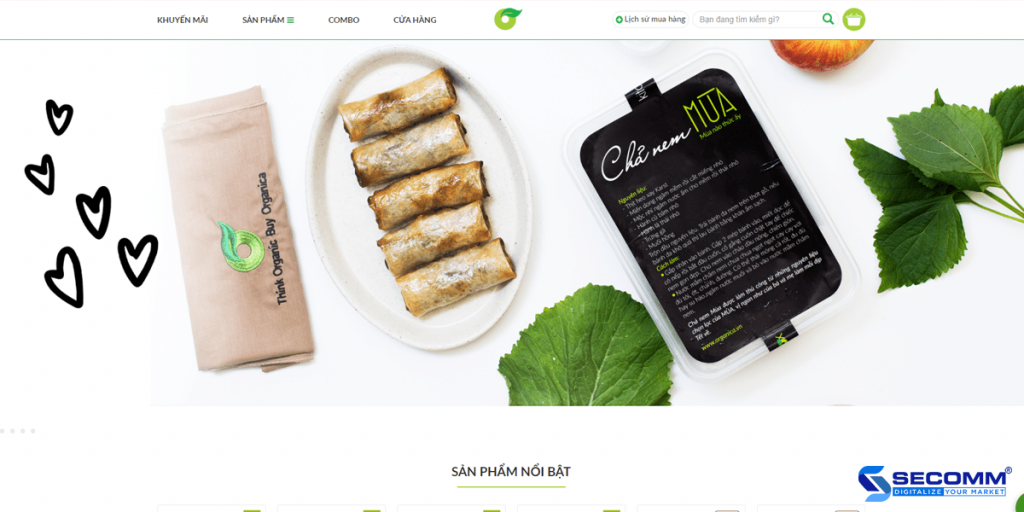
Organica is a natural and non-GMO certified organic food development and distribution system.
– Website: https://www.organica.vn/
– Traffic: 27.2K/month

Farmer’s Market is a fresh food chain store brand managed by LARIA Trading Co., Ltd. To provide a seamless shopping experience O2O (online to offline), the company has built an omni-channel retail system serving over 4,000 customers daily.
– Website: https://farmersmarket.vn/
– Traffic: 17.5K/month
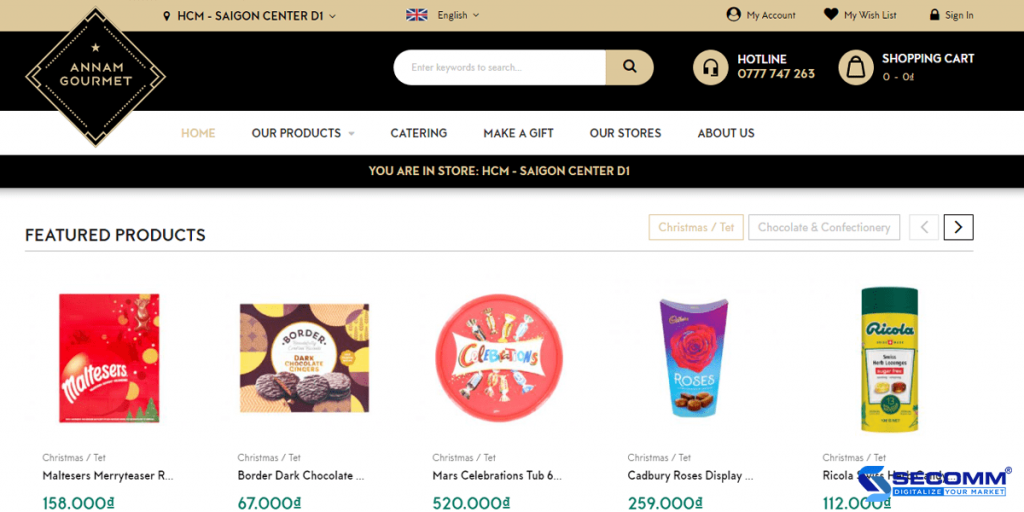
Annam Gourmet arose from the two Annam Group founders’ deep love of European cuisine. Annam Gourmet chain stores have been successfully operating in the Vietnamese market for over 20 years, offering high-quality imported product lines such as high-end food, wine, beverages, and cosmetics.
– Website: https://shop.annam-gourmet.com/
-Traffic: 8.7K/month
With a 200% annual growth rate, the future potential of grocery eCommerce in the Vietnamese market is undeniable (according to Statista). There are numerous opportunities in the eGrocery industry. Recently, many challenges have arisen, necessitating careful consideration of tactics by business managers in order to take the most effective steps.
The eGrocery businesses have opportunities and challenges, requiring business managers to consider tactics to take the most effective steps. Finding a partner is tricky and building an in-house team is tough. Businesses must incur significant opportunity costs and time to reach the goal.
Our company – SECOMM has been partnering with many big enterprises such as An Nam Group (Vietnam), Jasnor (Australia), and Changi Airport Group (Singapore). We are aware of the challenges and worries faced by firms while developing an e-commerce website system.
Get in touch with us now for FREE eCommerce consultancy and solutions in eGrocery businesses.
 2
2
 8,965
8,965
 0
0
 1
1Subscribe to get the latest eBook!
Hotline